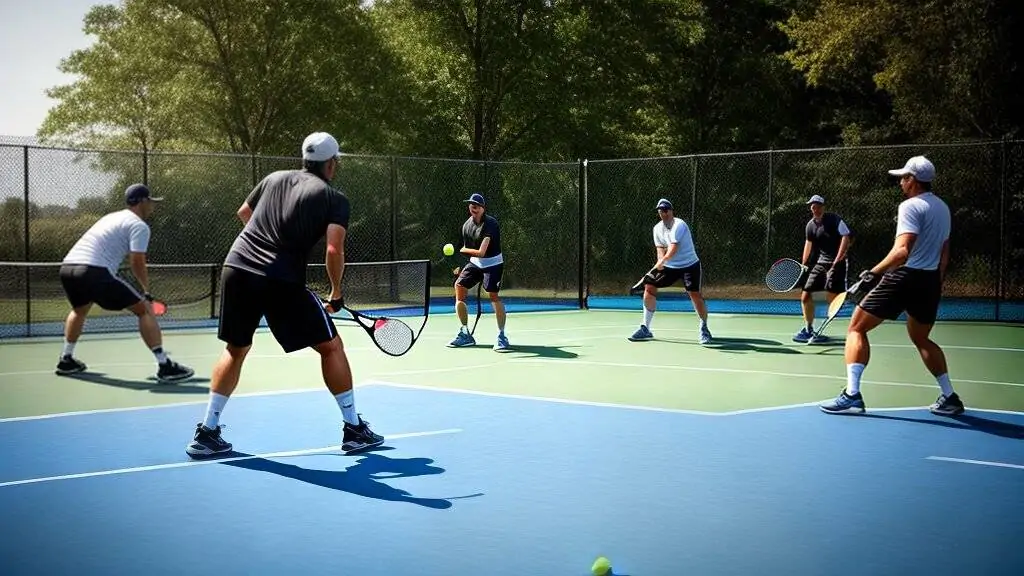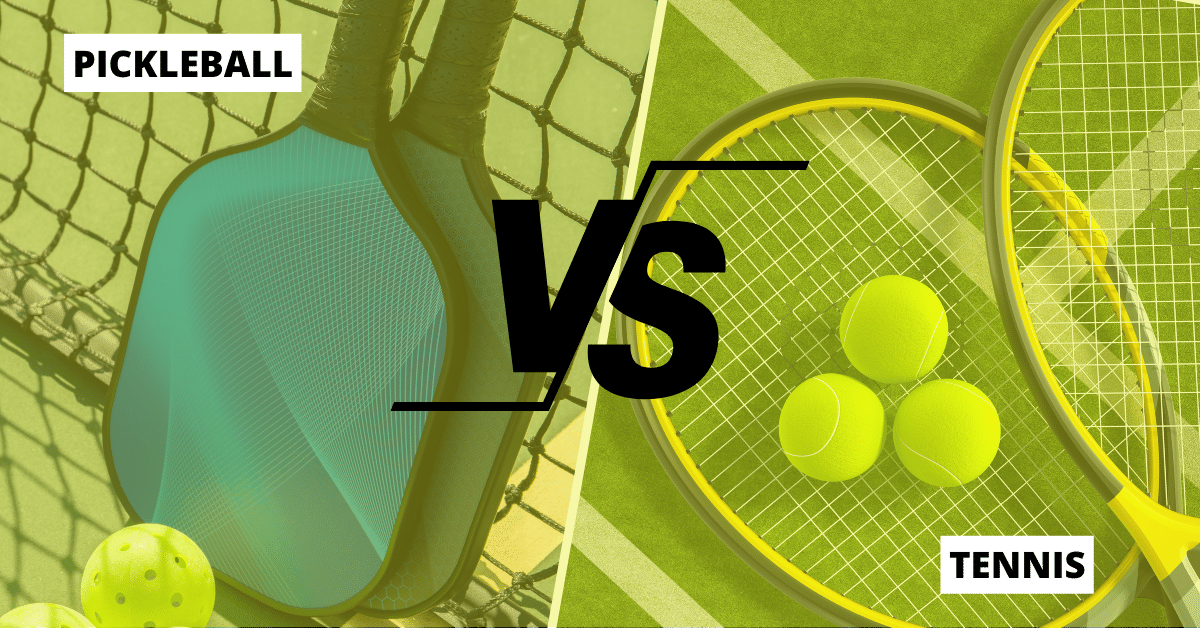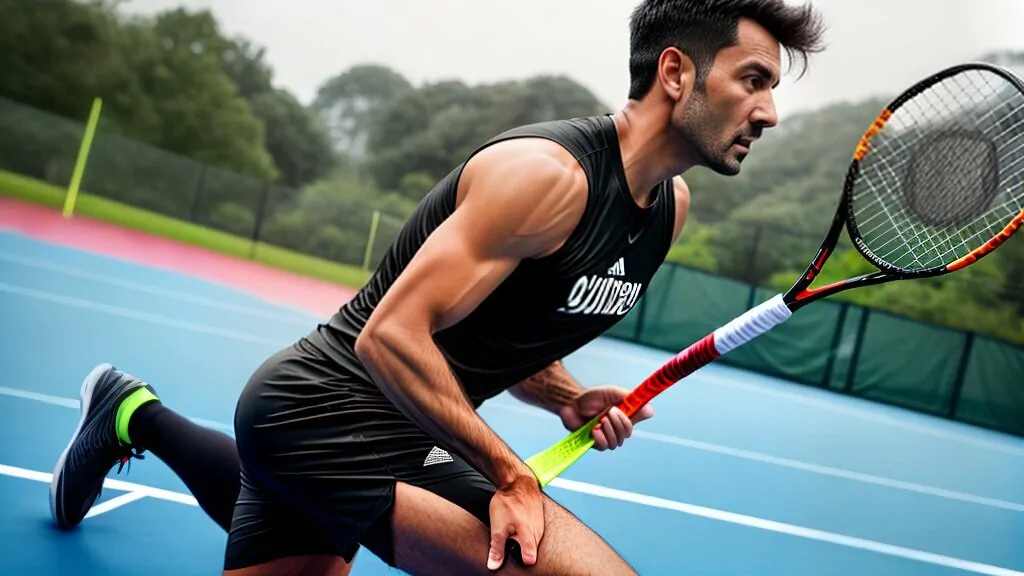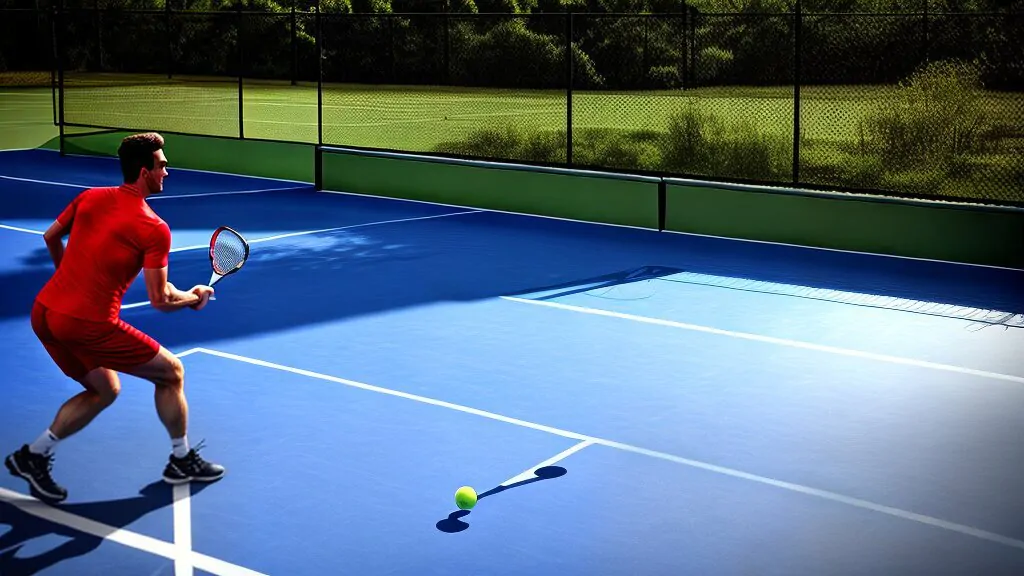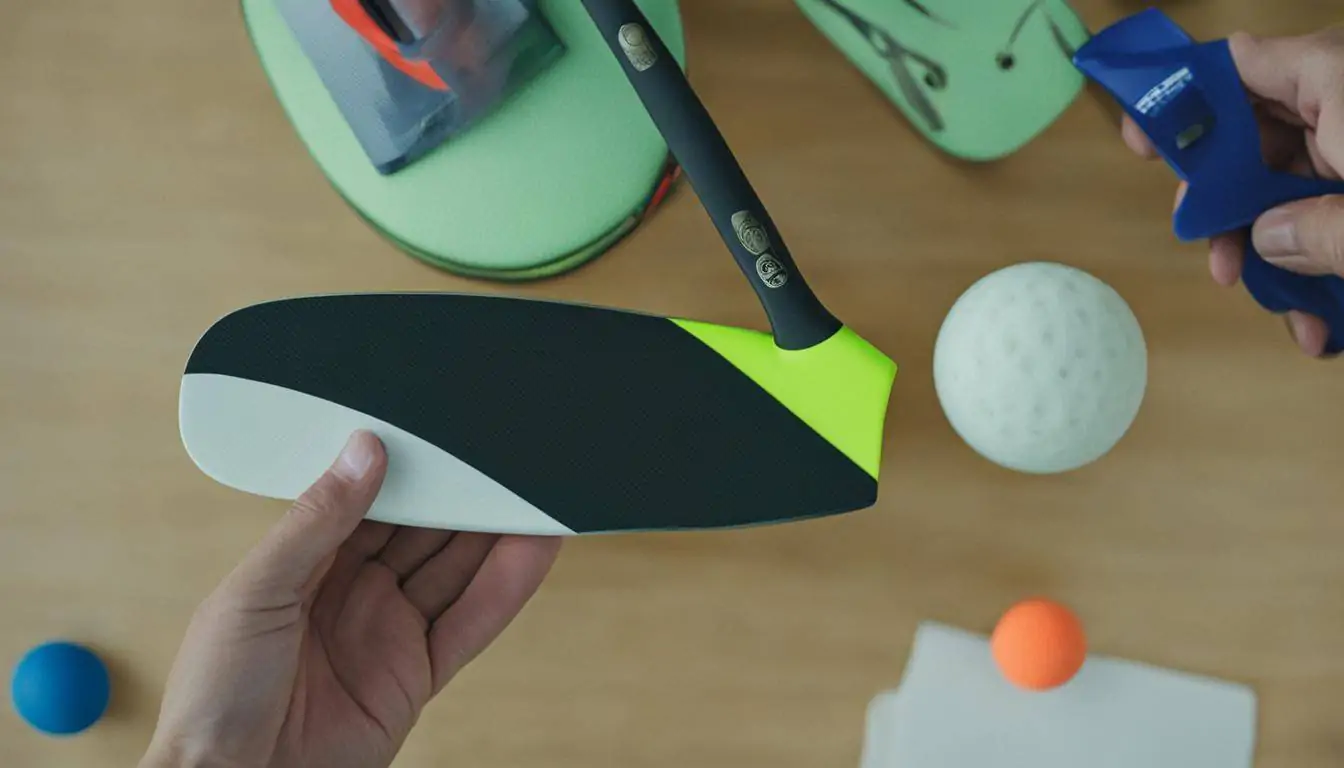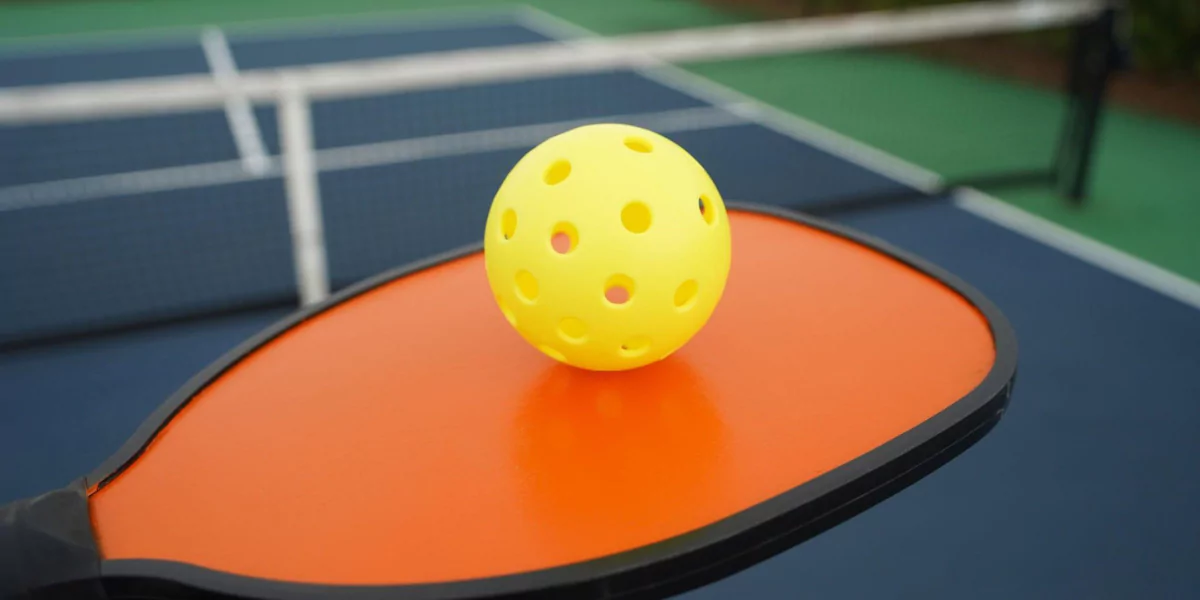If you’re a beginner wondering whether pickleball is hard to play, you’re not alone. While pickleball may seem intimidating at first, the good news is that it’s actually quite accessible and easy to learn. As with any sport, there is a learning curve, but with practice and patience, you’ll be able to enjoy the game and improve your skills. In this article, I’ll provide an overview of the game, discuss its difficulty level for beginners, and offer tips and techniques for enhancing your pickleball journey.
Key Takeaways:
- Pickleball may have a learning curve, but it is accessible and easy to learn.
- With practice and patience, beginners can improve their skills and enjoy the game.
- In this article, we will provide an overview of the game, discuss its difficulty level for beginners, and offer tips and techniques for enhancing your pickleball journey.
Understanding Pickleball: A Brief Introduction
If you’re new to pickleball, you may be wondering what it’s all about. Pickleball is a paddle sport that combines elements of tennis, badminton, and ping-pong, and can be played both indoors and outdoors. The game is played with a paddle and a lightweight, perforated ball.
The objective of the game is to hit the ball over the net and land it within the boundaries of the court, while your opponent tries to do the same. The game can be played in singles or doubles, and the first player or team to reach 11 points (with a lead of 2 points) wins the game.
Before you start playing, you will need to have the proper equipment. This includes a pickleball paddle, pickleballs, and appropriate court shoes. You can find these at most sporting goods stores or online retailers.
Rules of the Game
Here are some basic rules you should be aware of:
- The serve must be made diagonally across the court and the ball must clear the net and land in the opposite service court.
- The ball can only be hit once on each side before it must be returned to the opponent’s court.
- The non-volley zone (also known as the “kitchen”) is the area within 7 feet on either side of the net. You cannot hit a volley (a ball hit in the air without first bouncing on the court) while standing in this zone, unless the ball bounces in the zone first.
- If the ball hits the net during a serve and lands in the correct service court, it is called a “let” and the serve is retaken.
These are just a few basic rules to get you started. As you become more experienced, you will learn more rules and strategies for playing pickleball.
Master The Game: Complete Guide To Pickleball Rules & Tips
Pickleball Techniques for Beginners
When starting to play pickleball, it is important to learn the basic techniques to be able to play the game effectively. As a beginner, understanding the proper techniques can help you avoid injuries and develop good playing habits. Below are some essential pickleball techniques that every beginner should know:
Serving
The serve is the first shot in every rally, and an effective serve can give you an instant advantage. To serve correctly, stand behind the baseline and hit the ball with an underhand swing, making sure the ball clears the net and lands inside the service court. Remember to keep the ball low and slow, allowing you to be in good position for your next shot.
Latest Guidelines About Pickleball Serving Rules 2023
Volleying
Volleying is hitting the ball before it bounces on the ground. Volleying is an essential technique for both offensive and defensive play. To volley correctly, keep your paddle in front of you, and move towards the ball and hit it before it bounces. Remember to use a gentle touch and keep the ball low to stay in control of the rally.
Mastering Pickleball Volleys: Strategies For Singles And Doubles Success
Dinking
Dinking is a soft shot that lands just over the net, causing your opponent to hit a weak return. The dink shot is an effective way to control the pace of the game and set up your next shot. To dink correctly, start with a low, level paddle face and use a gentle upward swing to direct the ball over the net. Remember to aim for the opponent’s feet or towards the sidelines.
Dinking In Pickleball | Dominate Your Opponents With These Tips
Footwork
Footwork is an essential technique for getting into the right position to hit the ball and maintaining balance on the court. Good footwork allows you to move quickly and efficiently and make the shot you want to play. To improve your footwork, practice moving in different directions, and anticipate where the ball will go to be ready to hit it.
By practicing and mastering these basic techniques, you can become a confident and successful pickleball player. Remember to focus on the fundamentals, and don’t be afraid to try new techniques and strategies to improve your game.
Mastering Pickleball: Tips and Tricks
Now that you have a good grasp of the basics of pickleball, it’s time to take your skills to the next level. Here are some tips and tricks that have helped me master the game:
1. Practice your serves
The serve is arguably the most important shot in pickleball, as it sets the tone for the rest of the point. Take the time to practice perfecting your serve, experimenting with different speeds and spins to keep your opponents guessing.
2. Master the art of the dink
The dink is a soft shot hit near the net that can be incredibly effective at throwing off your opponents. Practice this shot by hitting the ball just over the net with a gentle touch. This will allow you to control the pace of the game and force your opponents to make errors.
3. Improve your footwork
Footwork is crucial in pickleball. You need to be able to move quickly and efficiently around the court to reach the ball and hit accurate shots. Incorporate footwork drills into your practice routine to improve your speed and agility on the court.
4. Learn to anticipate your opponent’s shots
The key to winning at pickleball is to anticipate your opponent’s shots. Pay attention to their body language and the angle of the paddle to predict where they’re going to hit the ball, allowing you to get into position and hit a winning shot.
5. Play with more advanced players
If you really want to improve your pickleball skills, play against more advanced players. This will challenge you to step up your game and adopt new strategies for winning points. Don’t be afraid to ask for tips and advice, as most players will be happy to share their knowledge with you.
By incorporating these tips and tricks into your game, you’ll be well on your way to mastering pickleball and becoming a force to be reckoned with on the court.
Overcoming Challenges: Dealing with Pickleball Difficulty
As with any sport, pickleball comes with its own set of challenges that players may encounter while learning and playing the game. However, with practice and perseverance, these difficulties can be overcome.
One common challenge that players may face is the learning curve associated with mastering the various techniques involved in the game. It is important for beginners to remember that it takes time and effort to become proficient at pickleball. Practicing regularly and seeking guidance from experienced players can help players improve their skills and overcome these initial difficulties.
Another challenge that players may encounter is adapting to the pace of the game. Pickleball can be fast-paced and require quick reflexes, which can be intimidating for beginners. However, by practicing agility drills and improving reaction time, players can enhance their ability to keep up with the game.
Finally, it is common for players to experience frustration when facing more experienced opponents. It is important to remember that everyone was a beginner at some point and that losing is an opportunity to learn and improve. By staying positive and focusing on personal progress and improvement, players can overcome this challenge and enjoy the game even more.
Enhancing Your Pickleball Skills: Practice and Progression
Improving your pickleball skills requires practice and progress. Whether you’re a beginner or an advanced player, setting goals and structuring your practice sessions can significantly enhance your abilities.
Setting Goals for Practice Sessions
Setting specific goals for your practice sessions can help you stay focused and motivated. Instead of just playing for the sake of playing, set objectives for each session that align with your overall goals. For example, you may aim to improve your backhand stroke or work on your footwork.
It’s essential to make sure your goals are realistic and achievable. Setting goals that are too ambitious can be discouraging and counterproductive. Start small and gradually increase the difficulty of the tasks as you progress.
You should also track your progress towards your goals. Keep a record of your achievements, and celebrate your accomplishments as you reach your milestones. This will help you stay motivated and engaged in your pickleball journey.
Structuring Your Practice Sessions
Structuring your practice sessions can make them more effective and efficient. You can break down your practice sessions into different sections, focusing on different aspects of the game. For example, you may dedicate the first 20 minutes of your session to serving practice and the next 30 minutes to working on your volleys.
It’s also important to practice with intention and purpose. Instead of just hitting the ball back and forth, try to replicate game situations and scenarios. This will help you develop your skills in a more realistic environment and better prepare you for actual games.
Lastly, don’t forget to warm up and cool down properly before and after your practice sessions. This can help prevent injuries and keep you feeling your best on the court.
Progression and Consistency
As with any sport, progression and consistency are key to improving your pickleball skills. Make it a habit to practice regularly, even if it’s just for a short amount of time each day. This will help you build muscle memory and develop your skills over time.
It’s also important to challenge yourself and progressively increase the difficulty of your practice sessions. As you achieve your goals, set new ones that push you out of your comfort zone and require you to develop new skills.
Remember, improving your pickleball skills isn’t a quick fix. It takes time, effort, and dedication. But with consistent practice, structured sessions, and clear goals, you can enhance your abilities and enjoy the game even more.
Conclusion
In conclusion, pickleball may seem intimidating to beginners, but with the right approach and techniques, it can be a highly enjoyable and accessible sport. By following the tips and tricks provided in this article, players can improve their skills and feel more confident on the court.
It is important to remember that pickleball, like any sport, requires practice and dedication to master. By structuring practice sessions and setting achievable goals, beginners can enhance their abilities and progress in the game.
While challenges and difficulties may arise while learning and playing pickleball, it is important to stay motivated and take them as opportunities for growth. By overcoming these obstacles, players can become even stronger and more skilled in the sport.
Overall, pickleball offers an exciting and social way to stay active and fit. By applying the tips and techniques provided in this article, readers can embark on a fulfilling and rewarding pickleball journey.
FAQ
Q: Is pickleball hard to play?
A: Pickleball can be easily picked up by beginners. With a smaller court, slower pace, and lighter paddles, it is a relatively accessible and enjoyable sport for players of all ages and skill levels.
Q: What is pickleball?
A: Pickleball is a paddle sport that combines elements of tennis, badminton, and table tennis. It is played with a paddle and a plastic ball on a court that is divided into sections similar to a tennis court. The objective is to hit the ball over the net and into the opponent’s court, earning points when they fail to return the ball successfully.
Q: What equipment do I need to play pickleball?
A: To play pickleball, you will need a pickleball paddle, a pickleball, and proper sports shoes. Pickleball paddles are usually made of lightweight materials such as graphite or composite, and the pickleball is a plastic ball with holes similar to a wiffle ball.
Q: What are some basic techniques in pickleball?
A: Some basic techniques in pickleball include serving, volleying, and dinking. Serving involves starting the point by hitting the ball over the net. Volleying refers to hitting the ball in the air without letting it bounce. Dinking is a soft shot that is placed strategically to the opponent’s weaker spots.
Q: How can I improve my pickleball skills?
A: To improve your pickleball skills, practice regularly and focus on specific areas such as serving, volleying, and footwork. Additionally, watching and learning from experienced players can provide valuable insights and strategies to enhance your gameplay.
Q: What are some tips and tricks to master pickleball?
A: To master pickleball, focus on improving your accuracy, speed, agility, and shot selection. Develop a variety of shots, work on your footwork, and practice with players of different skill levels. Additionally, understanding the strategy and tactics involved in the game can help you outsmart opponents.
Q: Are there any challenges in playing pickleball?
A: Like any sport, pickleball has its challenges. Some common difficulties include mastering the proper technique, adapting to different playing styles, and dealing with competitive pressure. However, with practice, perseverance, and a positive mindset, these challenges can be overcome.
Q: How can I enhance my pickleball skills?
A: Enhancing pickleball skills requires consistent practice and progression. Structure your practice sessions to focus on specific areas of improvement, set goals for yourself, and gradually increase the difficulty level of your practice drills. Learning from experienced players and seeking feedback can also aid in skill enhancement.
